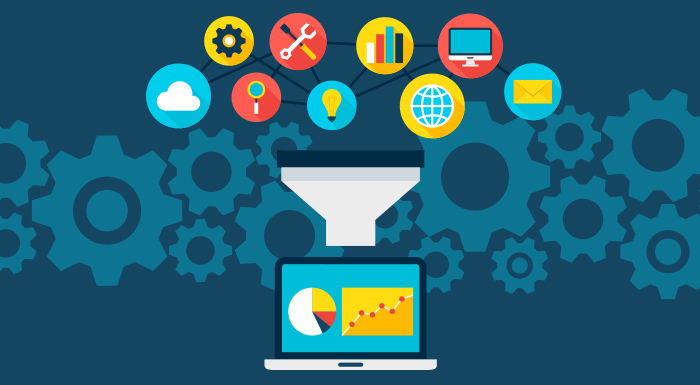Can Digital Transformation Solve Your Lead Qualification Problems?

Digital is a critical part of marketing, and it’s becoming more important every day. It’s transforming how you orchestrate campaigns, how often you create touchpoints with buyers, and how focused and tailored your messaging can be. Yet even though digital is making marketing more precise, sales still receives frustrated, reluctant marketing-qualified leads (MQLs) who have no interest in answering sales’ calls or emails.
Fortunately, digital can help solve this problem, too. By bringing digital transformation into the customer experience, you can build web applications and mobile apps that put your lead qualification model on the right track. Before we dive into the solution, though, let’s take a look at what’s causing the problem.
When sales runs the show
For most marketers I’ve met, the standard game plan is to pass leads to sales the minute they’re qualified. And if you believe that sending more buyers to sales means more closed business, it makes sense to give sales the reins as soon as you can. So when marketing is deciding whether sales should talk to a buyer, they usually focus on two main factors.
First, capacity: Can this buyer buy from you? Based on their company size, industry and marketing segment, do they have the money and the need for what you’re selling?
Second, propensity: Are they likely to buy right now? This means examining their BANT — budget, authority, needs and timeline — and determining the odds they’ll purchase a solution like yours soon.
Here’s how I usually see this style of qualification play out. Buyers start researching your company, using your website to decide if your solution is worth a sales call. Meanwhile, marketing uses gated content to learn more about buyers and to determine capacity and propensity. Once they do, qualified buyers are sent straight to sales — whether they like it or not. And not everyone will like it. Some will avoid your gated content and continue their search elsewhere.
Your competitor’s website, for example.
Even if they do fill out your forms, you might still notice something after sales activation …
Reluctance. Buyers aren’t happy to talk to sales, and they drop out of the funnel in droves after sales gets involved. But that’s just the cost of doing business, isn’t it?
Not exactly. It’s true that you can’t close every lead, but let’s talk about how you can improve your odds.
Affinity: The missing piece
Capacity and propensity both matter, but they’re not enough on their own. Before a buyer will happily accept a sales call or schedule a meeting with your reps, they have to really want what you’re selling — and know you’re the best person to buy it from.
And that’s what affinity is. It’s not when sales wants to talk to buyers. It’s when buyers are ready to talk to sales.
Buyers don’t always want to be sold to right away. Think about it: Would you want to take a call from a company whose website you’d only visited once? Of course not. You’d be frustrated — if you stayed on the phone for more than ten seconds.
Buyers want to be excited about your offering before you contact them. And badly timed calls aren’t the way to get them there.
Buyer in the driver’s seat
If you want to get buyers enthusiastic about your company, getting leads to sales ASAP is no longer the best strategy. Instead, you want buyers to know you can solve their problems before they talk to sales.
That’s not easy, though. There’s a reason marketing usually turns things over to sales. Salespeople can work one-on-one to understand buyers’ needs, help them see why a given solution is or isn’t a good fit, and help them select the right products.
So how can marketing do that? Digital transformation. Mobile and web applications can bring the personalized, interactive nature of a sales call into the self-service realm. They help customers build enough affinity to want to talk to your sales team — not the competition.
Delaying your sales team’s involvement seems counterintuitive. As a marketer, it feels like you’re not doing everything you can to close the business. But really, this moves enthusiastic buyers through the funnel faster — and with a higher close rate. According to B2B marketing and sales consulting firm SiriusDecisions, nurturing affinity with buyers before sending them to sales increases your close rate dramatically — from 18% to 31%.
With the right digital resources, marketing can help buyers achieve what they want —excitement and confidence in a solution. Marketers can qualify buyers more accurately. And when they pass more enthusiastic buyers to sales at the right time, they can achieve the goal of marketing laid out by management expert Peter Drucker: “Marketing should result in a customer who is ready to buy.”
Want to learn more about exactly which tools to build in order to nurture affinity with today’s buyers? I recently hosted a webinar with SiriusDecisions Analyst Gil Canare, called Digital Transformation: From Obstacle to Opportunity, where we discussed concrete ways you can do just that. Watch the recording now!